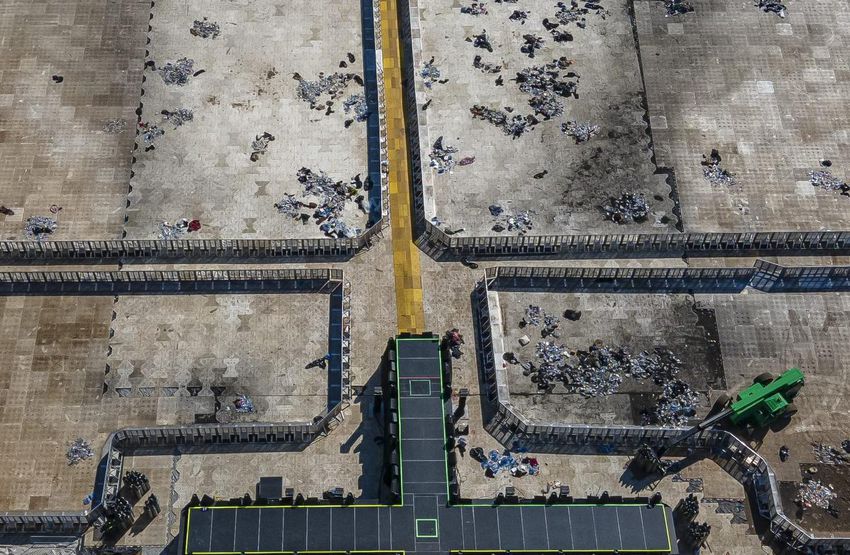As he lay on the ground with thousands of concert goers around him, Evan Pond had a simple thought: I’m not going to make it.
“Honestly, I had a hard time breathing. I thought I was going to die, ”he said, recalling the horror of Friday night’s Astroworld Fest in Houston.
Pond, a 16-year-old resident of Simcoe, Ontario, fell to the ground as the crowd increased when Toronto music superstar Drake appeared on stage with headliner Travis Scott. He stayed there for two or three songs. As he lay there, he saw “loads” of other concert goers around him, some passed out and spitting blood. A girl turned to ask him if he was going to survive.
“I didn’t know what to say to him,” said Pond, who traveled alone to Texas last Wednesday.
Eight people died and hundreds were injured after the crowd took to the stage at the concert.
Now, as local police examine the evidence with the help of the FBI, more than a dozen lawsuits attempt to answer a basic question: Who is to blame for the tragedy?
Music industry professionals, crowd control experts, legal analysts and concert goers say there is more than enough blame for everyone. Scott and Drake, as well as concert promoters Live Nation and ScoreMore, are among those named in the lawsuits.
Eric Alper, a veteran Toronto concert promoter and music industry public relations consultant, says keeping concert goers safe is not the responsibility of one person or one organization.
“It is everyone’s responsibility. It is the artist’s responsibility to keep an eye on and keep the audience happy and keep them safe, as much as possible. It is the responsibility of the city to make sure that the people who are going to have the event comply with the legal rules. And it is the responsibility of the promoter to make sure that the tickets are not oversold, that they do not exceed capacity, “said Alper, who noted that Scott had been convicted twice previously for encouraging fans to take the stage and circumvent security barriers in other places. concerts.
At the NRG Park site, which can hold up to 200,000 people depending on how the seats and stages are set up, a crowd estimated at 50,000 came to the stage during Scott’s set.
While that’s only a quarter of overall capacity, it’s the actual area where the concert took place that matters, says G. Keith Still, one of the world’s leading experts on crowd control. And that area appeared to have been densely populated, said Still, who has consulted with police forces and governments around the world and has testified in hundreds of court cases.
“If I were an expert witness in this case, there would be some very damning evidence there, simply based on the design of the site,” Still said, noting that there was effectively only one exit from the area where the concert goers were.
University of Houston law professor Meredith J. Duncan said the case will almost certainly end with millions of dollars in damages, and will likely be settled before any trial.
“This is not a frivolous lawsuit. I would be surprised if he actually goes to trial, but if he does, there is the potential for major damages, ”Duncan said, adding that Scott’s past behavior is something jurors and judges would likely consider when assessing guilt. So will Live Nation and ScoreMore’s decisions to hire Scott despite that history, he added.
Jerry Andrews, president of the Dallas Trial Lawyers Association, agreed that Scott is likely in legal danger.
“You have an artist who has walked this path before. He has faced criminal penalties for very similar behavior, so it will be difficult for him to say ‘I had no idea this could happen,’ ”said Andrews, a veteran personal injury attorney.
Although Drake was not the lead artist, a lawsuit claims that he was still involved in creating the conditions for the crowd to lose control.
“When ‘Drake’ took the stage alongside ‘Travis Scott,’ he helped incite the crowd even though he knew of ‘Travis Scott’s earlier conduct,” reads part of a lawsuit filed by the Texas resident. Kristian Paredes, who was injured at the event.
“However, ‘Drake’ took the stage alongside ‘Travis Scott’ and continued to perform alongside ‘Travis Scott’ as the crowd got out of control. ‘Drake’ even continued to perform on stage as the crowd chaos continued, ”the lawsuit reads.
The Toronto-born artist aware his reaction to the event on Instagram, promising to be “on duty.”
“My heart is broken for the families and friends of those who lost their lives and for all those who are suffering,” he wrote. “I will continue to pray for all of them and I will be at their service in whatever way I can.”
Live Nation and ScoreMore have said they are cooperating with official investigations, including sharing security camera footage of the event and delaying the dismantling of the stage setup.
What matters most in preventing tragedies like Astroworld, the deadly Hillsborough stadium disaster that killed nearly 100 people in England in 1989, or even some of the deadly stampedes in Mecca during Hajj, is making sure that the density of the crowd does not increase too much. Still said.
He compared the density break point to the red line on his car’s tachometer.
“What happens if you rev the engine above the red line? There’s a good chance, a good chance that it will fail, explode, or freeze. It’s the same with the density of the crowd, ”Still said. “High-density crowds and high-energy environments combined have a high risk of failure. They’re in the red zone on your tachometer, so to speak. “
Venues and event organizers also need to have a way to monitor crowd density in real time and a way to mitigate things, such as multiple exits or closing the event, he added.
But stopping a concert prematurely can inflame an already volatile situation, Alper warned.
“Absolutely that can create more problems. And it has happened. We saw at Woodstock ’99 where they stopped the show, tens of thousands of young people began to riot and set fires and sexually assault people. They were angry, repressed, ”he said.
That’s why other safeguards must also exist and are the responsibility of the event organizers, rather than the event attendees, Still emphasized.
“There is guidance and legislation in every country that requires a duty of care to provide a safe environment. You’re hosting the damn event, making sure it’s safe enough for those people to get in. If you don’t provide a safe environment, that’s when your negligence claims start to come into play, ”Still said.
Event organizers are often tempted to sell more tickets than they should simply out of financial considerations, he said, pointing to the Fyre Festival as an example. He called for greater regulation of the events industry, saying that right now, almost anyone can hang out as a concert or event promoter.
“That is the fundamental issue. The industry is not regulated, ”Still said.
But, Alper added, no matter how many political safeguards are put in place, people can still find a way around them.
“It is part of human nature that no amount of laws and rules will be able to govern a powder keg situation like the one we saw in Houston. I think there is a lot of guilt, and it could be years until we find out what was really going on. “
JOIN THE CONVERSATION
Reference-www.thestar.com



